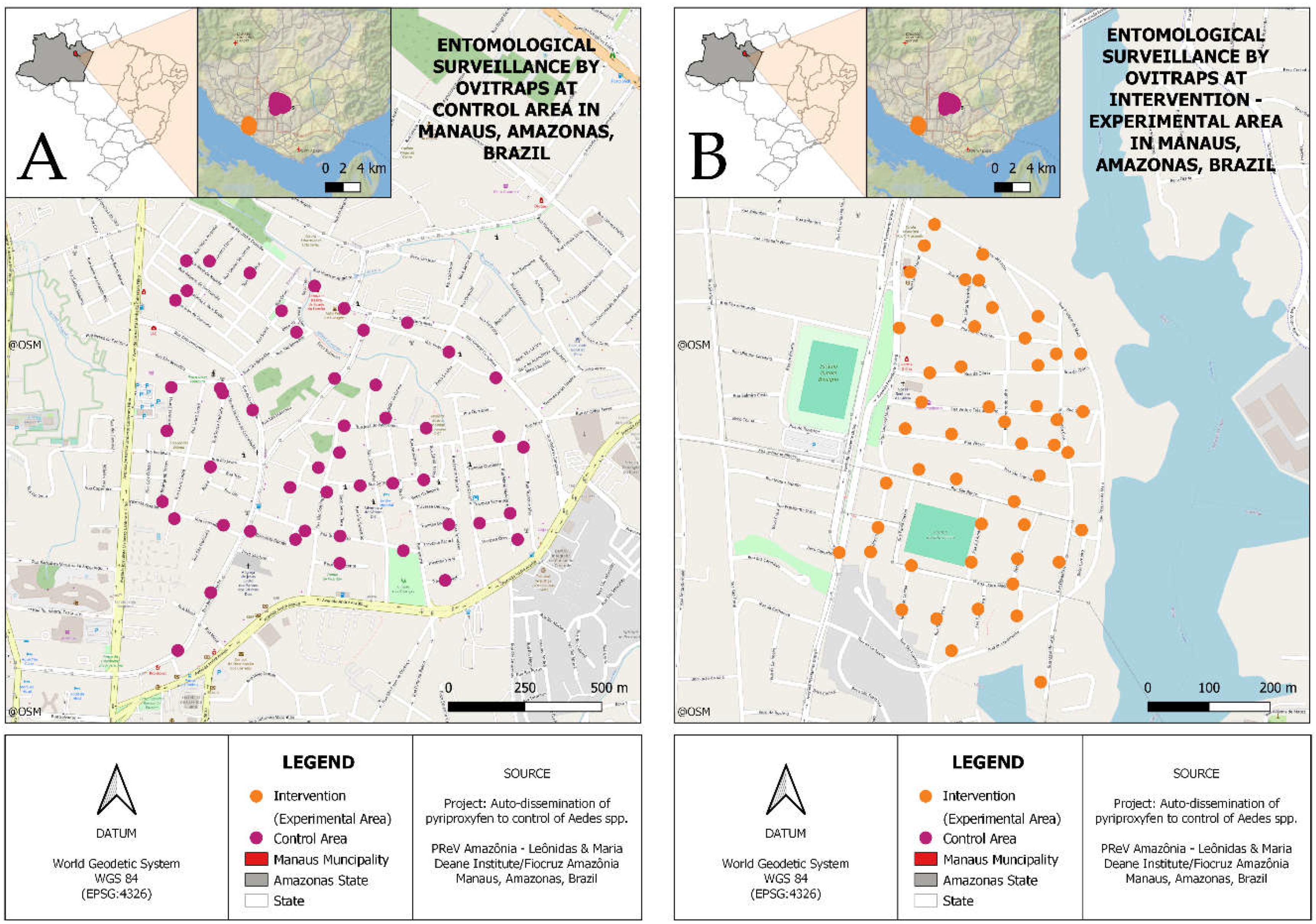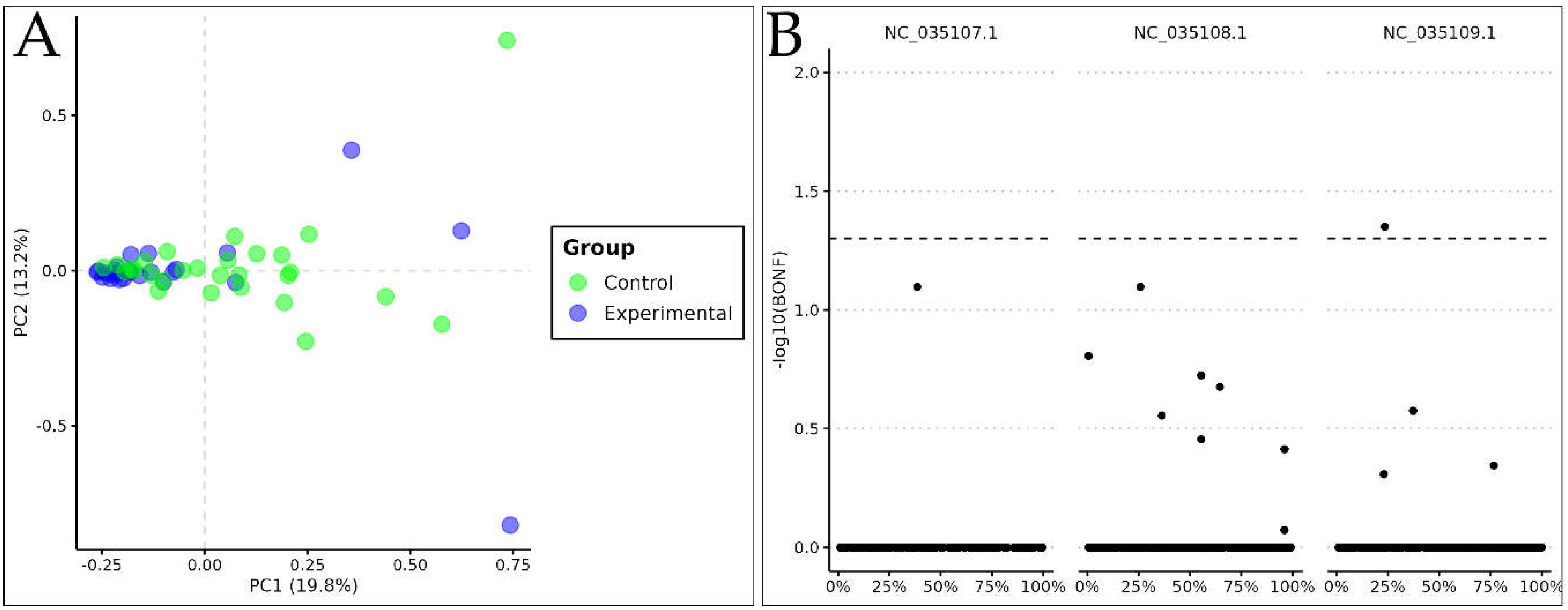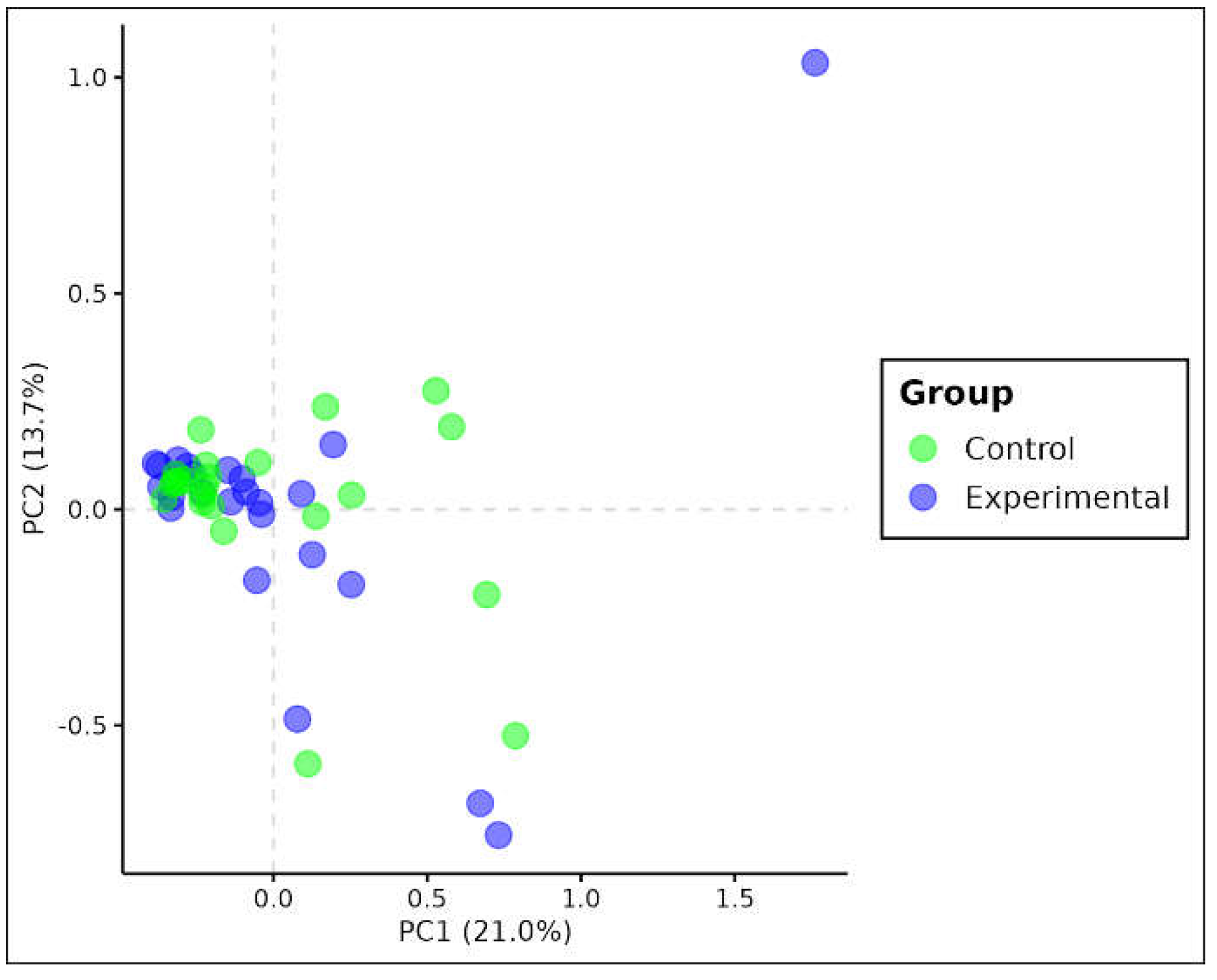Submitted:
06 July 2024
Posted:
10 July 2024
You are already at the latest version
Abstract
Keywords:
1. Introduction
2. Materials and Methods
2.1. Study Area and Mosquito Surveillance
2.2. Sample Preparation and Sequencing
2.3. Species Identification
2.4. Variant Calling
2.5. Population and Structure Genetics Inferences
3. Results
3.1. Data Collection and DNA Extraction
3.2. Double Digest Restriction-Site Associated DNA Sequencing (ddRADseq) Performance
3.3. Statistical and Structural Analysis
4. Discussion
5. Conclusions
Author Contributions
Funding
Institutional Review Board Statement
Informed Consent Statement
Acknowledgments
Conflicts of Interest
References
- Kraemer, M.U.G; Sinka, M.E. The global distribution of the arbovirus vectors Aedes aegypti and Ae. albopictus. eLife 2015, 4:e08347. [CrossRef]
- Espinal, M.A.; Andrus, J.K. Emerging and Reemerging Aedes-Transmitted Arbovirus Infections in the Region of the Americas: Implications for Health Policy. Am J Public Health 2019, 109(3):387-392. [CrossRef]
- Evans, B.R.; Gloria-Soria, A. A multipurpose, high-throughput single-nucleotide polymorphism chip for the dengue and yellow fever mosquito, Aedes aegypti. G3 2015, 26-5(5):711-8. [CrossRef]
- BRASIL. Ministério da Saúde. Relatório da Reunião Internacional para Implementação de Alternativas para o Controle do Aedes aegypti no Brasil. Boletim Epidemiológico 2016, v. 47, n. 15:(2358-9450).
- ISGBLOBAL - Annual Report ISGlobal. Barcelona Institute for Global Health. Barcelona, 2018. Available online: https://www.isglobal.org. (accessed on 02.07.2024).
- Devine, G.J.; Zamora-Perea, E. Using adult mosquitoes to transfer insecticides to Aedes aegypti larval habitats. Proc Natl Acad Sci 2009. Jul-14;106(28):11530-4. [CrossRef]
- Garcia, K.K.S.; Versiani, H.S. Measuring mosquito control: adult-mosquito catches vs egg-trap data as endpoints of a cluster-randomized controlled trial of mosquito-disseminated pyriproxyfen. Parasit Vectors 2020, 14;13(1):352. [CrossRef]
- Abad-Franch, F.; Zamora-Perea, E. Mosquito-disseminated inseticide for citywide vector control and its potential to block arbovirus epidemics: entomological observations and modeling results from Amazonian Brazil, PLoS Med 2017, 17;14(1):e1002213. [CrossRef]
- Abad-Franch, F.; Zamora-Perea, E. Mosquito-disseminated pyriproxyfen yields high breeding-site coverage and boosts juvenile mosquito mortality at the neighborhood scale. PLoS Negl Trop Dis 2015, Apr 7;9(4):e0003702. [CrossRef]
- Leles, L.F.O. Alvarez, MVN. PLoS Negl Trop Dis 2024. DOI.
- Rahman, R.U.; Cosme, L.V. Insecticide resistance and genetic structure of Aedes aegypti populations from Rio de Janeiro State, Brazil. PLoS Negl Trop Dis. 2021, 15(2):e0008492. [CrossRef]
- Campos, M.; Conn, J.E. Microgeographical structure in the major Neotropical malaria vector Anopheles darlingi using microsatellites and SNP markers. Parasit Vectors 2017, Feb-13;10(1):76. [CrossRef]
- Matthews, B.J.; Dudchenko, O. Improved reference genome of Aedes aegypti informs arbovirus vector control. Nature 2018, 563(7732):501-507. [CrossRef]
- Boyle, J.H.; Rastas, P.M.A. A Linkage-Based Genome Assembly for the Mosquito Aedes albopictus and Identification of Chromosomal Regions Affecting Diapause. Insects 2021, 12(2):167. [CrossRef]
- Goodwin, S.; Mcpherson, J.D. Coming of age: ten years of next-generation sequencing technologies. Nature Reviews Genetics 2016, v. 17, n. 6, p. 333. [CrossRef]
- Andrews, S. FastQC: A Quality Control Tool for High Throughput Sequence Data. 2010. Available online: http://www.bioinformatics.babraham.ac.uk/projects/fastqc/ (accessed on 02.07.2024).
- Li, H. and Durbin, R. Fast and accurate short read alignment with Burrows-Wheeler transform. Bioinformatics 2009. Jul-15;25(14):1754-60. [CrossRef]
- Li, H. A statistical framework for SNP calling, mutation discovery, association mapping and population genetical parameter estimation from sequencing data. Bioinformatics 2011. Nov-1;27(21):2987-93. [CrossRef]
- Altschul, S.F.; Gish, W. Basic local alignment search tool. J Mol Biol 1990. Oct-5;215(3):403-10. [CrossRef]
- Bolger, A.M.; Lohse, M. Trimmomatic: a flexible trimmer for Illumina sequence data. Bioinformatics 2014. Aug-1;30(15):2114-20. [CrossRef]
- Purcell, S.; Neale, B. PLINK: a tool set for whole-genome association and population-based linkage analyses. Am J Hum Genet 2007. Sep-81(3):559-75. [CrossRef]
- RSTUDIO TEAM. RStudio, Inc., Boston, MA., v. 42, p. 14, 2015. Available online: http://www.rstudio.com/ (accessed on 02.07.2024).
- Excoffier, L. and Lischer, H.E. Arlequin suite ver 3.5: a new series of programs to perform population genetics analyses under Linux and Windows. Mol Ecol Resour. 2010, May;10(3):564-7. [CrossRef]
- TEAM, R. Core. RA Lang Environ Stat Comput 2013, v. 55, p. 275-286, Available online: http://www.R-project.org/ (accessed on 02.07.2024).
- 2González Segarra, AJ.; Pontes, G. Hunger- and thirst-sensing neurons modulate a neuroendocrine network to coordinate sugar and water ingestion. eLife 2023, 12:RP88143. [CrossRef]
- Havula, E.; Ghazanfar, S. Genetic variation of macronutrient tolerance in Drosophila melanogaster. Nature Communications 2022, 13:1637. [CrossRef]
- Shahid, S.; Shi, Y. CCHamide2-receptor regulates feeding behavior in the pea aphid, Acyrthosiphon pisum .Science Direct 2021, Elsevier. Peptides 143. [CrossRef]
- Wang, Z.; Zhou, W. Characterization and Expression Profiling of Neuropeptides and G-Protein-Coupled Receptors (GPCRs) for Neuropeptides in the Asian Citrus Psyllid, Diaphorina citri (Hemiptera: Psyllidae). Int. J. Mol. Sci. 2018, 19, 3912. [CrossRef]
- Yamagata, N.; Imanishi, Y. Nutrient responding peptide hormone CCHamide-2 consolidates appetitive memory. Front. Behav. Neurosci. 2022, 16:986064. [CrossRef]
- Hobin, M.; Dorfman, K. The Drosophila microRNA bantam regulates excitability in adult mushroom body output neurons to promote early night sleep. iScience. Cell Press. 2022, 25, 104874. [CrossRef]
- Nagata, S.; Takei, Y. Chapter 84 - CCHamide: Handbook of Hormones, 2016, Academic Press, Pages 475-476.
- Bargielowski, I.E.; Lounibos, L.P. Evolution of resistance to satyrization through reproductive character displacement in populations of invasive dengue vectors. Proceedings of the National Academy of Sciences 2013, 110:2888–2892. [CrossRef]
- Honório, N.A.; Silva, W.D.C. Dispersal of Aedes aegypti and Aedes albopictus (Diptera: Culicidae) in an urban endemic dengue area in the State of Rio de Janeiro, Brazil. Memórias do Instituto Oswaldo Cruz 2003, 98:191–198. [CrossRef]
- Li, Y.; Kamara, F. Urbanization Increases Aedes albopictus Larval Habitats and Accelerates Mosquito Development and Survivorship. PLOS Neglected Tropical Diseases 2014, 8(11): e3301. [CrossRef]
- Consoli, R.A.G.B.; Oliveira, R.L. Principais mosquitos de importância sanitária no Brasil. Editora FIOCRUZ, Rio de Janeiro, Brasil, 1994, 228 p. Available from SciELO Books (http://books.scielo.org).
- Verdonschot, P.F.M. and Besse-Lototskaya, A.A. Flight distance of mosquitoes (Culicidae): A metadata analysis to support the management of barrier zones around rewetted and newly constructed wetlands, Limnologica 2014, Vol. 45, Pgs 69-79. [CrossRef]
- Guerra, C.A.; Reiner Jr, R.C. A global assembly of adult female mosquito mark-release-recapture data to inform the control of mosquito-borne pathogens. Parasites & Vectors 2014. [CrossRef]
- Harrington, L.C.; Scott, T.W. Dispersal of the dengue vector Aedes aegypti within and between rural communities. Am J Trop Med Hyg 2005. Feb;72(2):209-20. [PubMed]



| Ae. aegypti | Ae. albopictus | |||
|---|---|---|---|---|
| AdAl - Control | Total | Selected | Total | Selected |
| JAN/FEB – 2018 to 2020 | 28.311 | 28 | 16.820 | 23 |
| Glória - Experimental | Total | Selected | Total | Selected |
| JAN/FEB – 2018 to 2020 | 27.161 | 25 | 2.900 | 25 |
Disclaimer/Publisher’s Note: The statements, opinions and data contained in all publications are solely those of the individual author(s) and contributor(s) and not of MDPI and/or the editor(s). MDPI and/or the editor(s) disclaim responsibility for any injury to people or property resulting from any ideas, methods, instructions or products referred to in the content. |
© 2024 by the authors. Licensee MDPI, Basel, Switzerland. This article is an open access article distributed under the terms and conditions of the Creative Commons Attribution (CC BY) license (http://creativecommons.org/licenses/by/4.0/).





